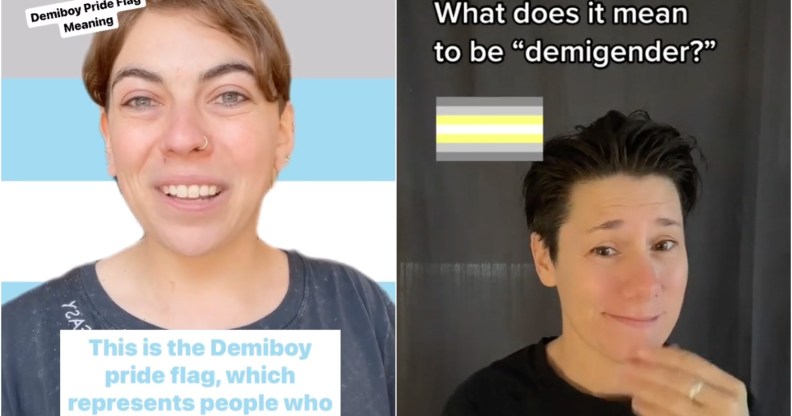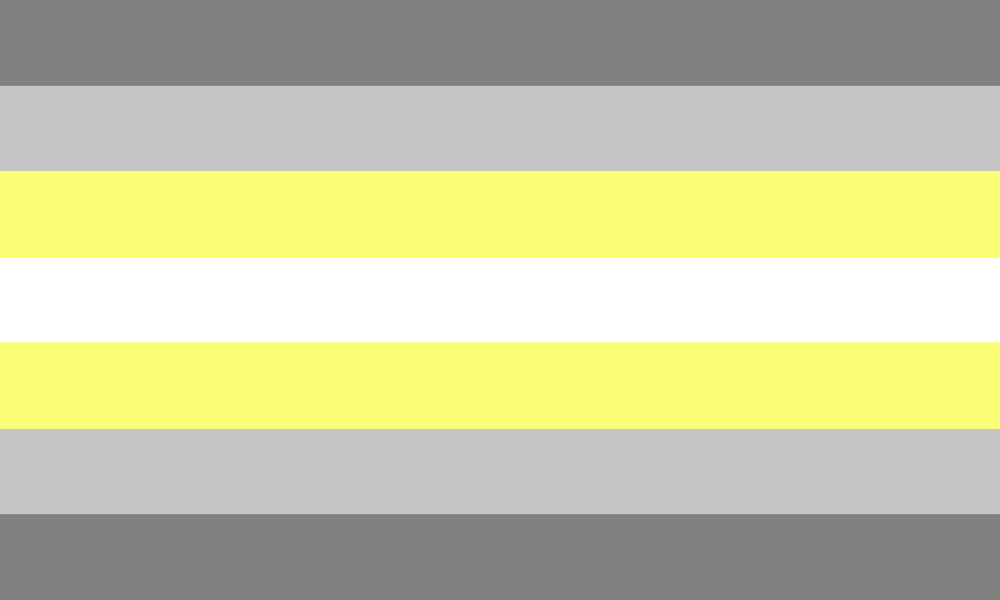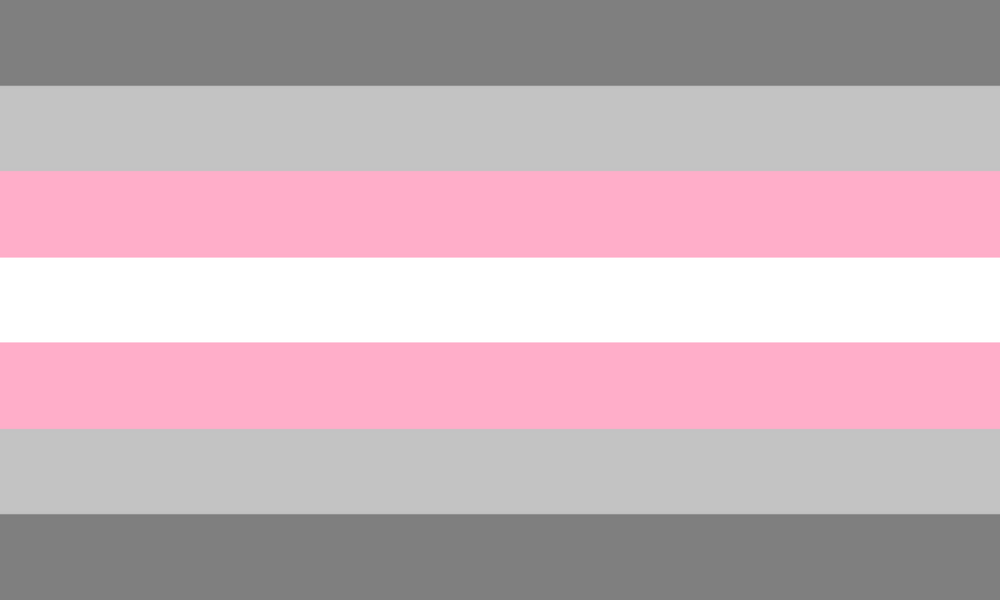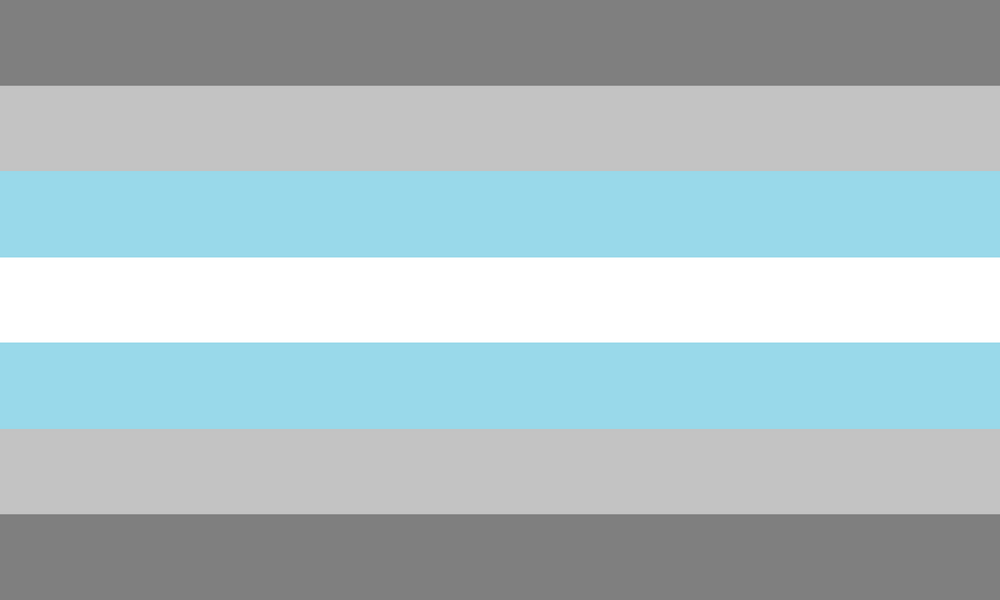What do demigender, demiboy and demigirl mean? Key LGBTQ+ terms explained

Many demigender people have taken to social media to discuss their experiences (Instagram: Zoe Stoller/TikTok: TheGenderRebel)
You may have heard people use the demigender labels demigirl and demiboy – but what do they mean and where do the terms originate?
In the ever-evolving LGBTQ+ dictionary, language has become an essential component of self-expression. You might have heard of non-binary people, transgender people, genderfluid people and even agender people, however, some less well-known terms you may not have heard are demigirl and demiboy.
Let’s take a look at what it means to be demigender in 2024.
What does the term demigender mean?
Demigender is an umbrella term that usually includes non-binary gender identities. Demigender may include: demigirl, demiboy, demienby, demiandrogyne and demitrans.
The term uses the “demi-” prefix, meaning half or partially, to reference having partial identification to a gender identity. However, both demigirl and demiboy are a form of non-binary gender.
The individual may identify as another gender in addition to being partially a girl (demigirl) or boy (demiboy), this may also be a combination of genders.
What does demigirl mean?
Demigirl is a non-binary gender label that describes an individual who partially identifies as a girl or woman.
Demigirl, also known as demiwoman, demifemale, demigal, or demidudette, can be used by any AFAB, AMAB or AXAB individual.
Healthline identified demigirl as a term that “tells you about someone’s gender identity but doesn’t convey any information about the sex or gender assigned to someone at birth.”
The definition adds that “a demigirl can be cisgender or trans.”
A demigirl’s identification with a girl or woman can differ from person to person. The individual may also experience discomfort or dysphoria related to gender.
In a 2023 Medium essay, demigirl identifying writer Shelby Thevenot shared: “Feminizing me erases me. Masculating me erases me. Suggesting I’m “not quite a woman” without giving me a word to own makes it sound like I am less.”
Demigirl Pride Day falls on 21 June.
What does demiboy mean?
Like demigirl, demiboy is a non-binary gender label that describes an individual who partially identifies as a boy or man.
Demiboy, also known as demiman, demimale, demiguy, demidude or demibloke, can be used by any AFAB, AMAB or AXAB individual.
A demiboy may identify with masculinity on varying levels, which can differ across identifying individuals.
Demiboy Pride Day falls on 22 June.
What is the history of the terms demigirl and demiboy?
In December 2010, demigirl and demiguy were added to the AVEN Gender Definitions Masterlist.
This came after user Bad Patient of AVEN shared in a now private post: “I said to myself that I can any word relate to me if I just stick a “demi-” in front of it. And then I realised that it might actually help me find a word for my gender identity.”
“I’ve felt for some time that I may have too much of the masculine element in me to call myself agender and feel good about it — so maybe it would be a nice idea to call myself a demiguy. Demidude. Demibloke.”
It’s believed that this was the first time someone used the “demi-” prefix to describe their gender.
Additionally, in 2014, demigirl and demiguy were added to Genderqueerid’s Genderqueer Identities & Terminology page.
This addition to the LGBTQ+ identity dictionary came when Genderqueerid owner Marilyn Roxie, had collected a survey of genderqueer individuals and demiboy and demigirl were selected as new options.
What are the demigender, demigirl and demiboy flags?
There are individual flags and symbols associated with demigender, demigirl and demiboy identities.
These flags are credited to Tumblr user Transrants in around 2015.
The demigender pride flag has seven stripes: two outer stripes in grey, two in lighter grey, and two in yellow with one white stripe in the centre.

Though there are no confirmed official meanings behind these colour layers, it’s thought that shades of grey refer to genderlessness and partial gender connection.
White may represent all genders, like in the non-binary flag, with yellow referencing non-masculine and non-feminine genders.
The demigirl flag contains 7 stripes, dark grey, light grey, light pink, white, light pink, light grey, and dark grey.

The greys represent a partial connection, the pink represents womanhood or femininity, and the white represents agender or non-binary identity.
The demiboy flag has 7 stripes: the colours are grey, light grey, pastel blue, white, pastel blue, light grey and grey.

It is assumed that grey represents partial connection, blue represents masculinity and white represents agender or non-binary identity.
The demiboy identity also has an allocated symbol, designed in 2014 by a group of non-binary Brazilians, it is the Mars symbol with half of the arrow removed.

The same group of non-binary Brazilians created a demigirl symbol which is the Venus symbol with half of the extending cross removed.

